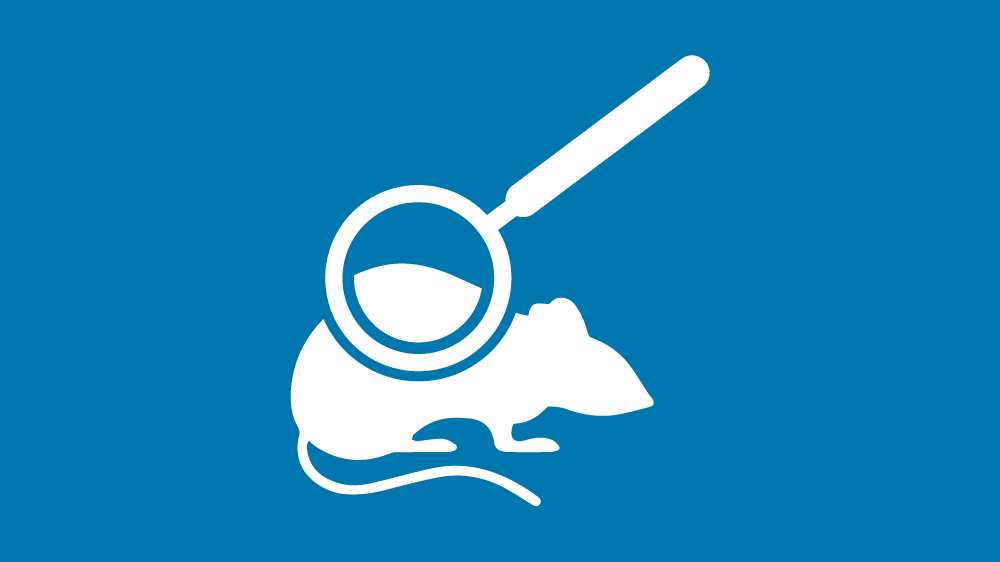Genetic drift in GA mouse studies
A discussion on the possible impact of genetic drift on the integrity of the data from GA mouse studies
For many years genetic drift has been used as a possible explanation for results which are difficult to interpret. Experimental outcomes such as changing phenotypes in well-established mouse lines or two apparently identical colonies, yielding different results after a few years of breeding apart have often been attributed to the slow change in a strain genome that happens over generations of breeding.
Genetic drift is caused by spontaneous mutations which occur throughout the genome. Many of these genetic alterations are in regions of non-coding DNA which at one time it was thought that this represented insignificant or ‘junk’ DNA. However it is now known that many of these sequences may have a function in appropriate gene regulation [1]. A smaller, but significant number, of changes will of course occur in protein-coding regions of the genome and potentially can alter the gene product and therefore the gene function.
With the arrival of whole genome sequencing and advance bioinformatics tools, it is now possible to do complex comparisons between the genomes of individuals. This is yielding much information on the extent of changes in genomes between generations, that is- the genetic alterations which are accumulating as animals are bred from generation to generation such as the propagation of a genetically altered mouse strain.
It has been calculated [2] that the spontaneous mutation rate is approximately 1 per 26Mb per generation which equates to the introduction of approximately 100 SNPs per genome each generation. By extrapolating this information we can estimate that a mouse line bred for 10 years as a closed colony (independent from its ancestral background strain) and assuming 3 generations per year, will have in the region of 3,000 nucleotide changes specific to that mouse lines.
Of course these gene mutations have been very advantageous in mouse genetics. Inbred strains harbouring these spontaneous mutations have been widely used in biomedical research and continue to be the source of much investigation.
| Strain | Phenotype | Mutation |
|---|---|---|
| C57BL/6JOlaHsd | Behavioural phenotype | Alpha-synuclein [3] |
| C3H/HeH | Retinal degeneration | Pde6 [4] |
| C57BL/6J | Reduced insulin secretion | Nicotinamide nucleotide transhydrogenase (Nnt) [5] |
| 129- all substrains | Impaired memory | Disc [5] |
| C57BL/6N | Retinal flecking | Crb1 [6] |
Managing genetic drift in GA mouse colonies
- Awareness: Be aware that the genomes of breeding colonies are dynamic entities. If phenotypes change or unexpected results are obtained, ensure that the correct controls are in place to exclude additional mutations other than those being studied.
- Prevention: Consider the implications of genetic drift very carefully before homozygosing a transgene or a mutation. A homozygous colony becomes a closed colony and a refuge for spontaneous mutations which are much more likely to get fixed within the genome of a small population than a line bred as heterozygotes
- Solutions: The easiest way to segregate any effects of spontaneous mutation within a homozygous GA colony (which could include fecundity and viability issues) is to backcross them to a defined background strain.
Summary
Genetic drift will always occur and confound a small, but significant proportion of results. Unless active measures are taken to prevent it, genetic drift can never be discounted in data interpretation.
References
- Yue F et al. (2014). A comparative encyclopedia of DNA elements in the mouse genome. Nature 515: 355-64. doi: 10.1038/nature13992
- Lynch (2010). Evolution of the mutation rate. Trends Genet 26: 345-52. doi: 10.1016/j.tig.2010.05.003
- Specht CG and Schoepfer R (2001). Deletion of the alpha-synuclein locus in a subpopulation of C57BL/6J inbred mice. BMC Neurosci 2: 11. doi: 10.1186/1471-2202-2-11
- Pittler SJ and Baehr W (1991). Identification of a nonsense mutation in the rod photoreceptor cGMP phosphodiesterase beta-subunit gene of the rd mouse. Proc Natl Acad Sci U S A, 88(19): 8322-6. doi: 10.1073/pnas.88.19.8322
- Freeman HC et al. (2006). Deletion of nicotinamide nucleotide transhydrogenase: a new quantitive trait locus accounting for glucose intolerance in C57BL/6J mice. Diabetes 55(7): 2153-6. doi: 10.2337/db06-0358
- Clapcote SJ and Roder JC (2006). Deletion Polymorphism of Disc1 Is Common to All 129 Mouse Substrains: Implications for Gene-Targeting Studies of Brain Function. Genetics 173(4): 2407–10. doi: 10.1534/genetics.106.060749
- Mattapallil MJ et al. (2012). The Rd8 mutation of the Crb1 gene is present in vendor lines of C57BL/6N mice and embryonic stem cells, and confounds ocular induced mutant phenotypes. Invest Ophthalmol Vis Sci 53(6): 2921-7. doi: 10.1167/iovs.12-9662
Introduction to best practices in confirming, maintaining and archiving GA mouse strains, including avoiding genetic drift.

